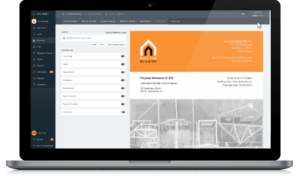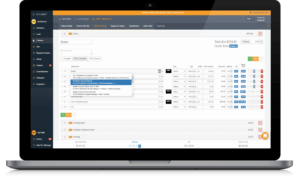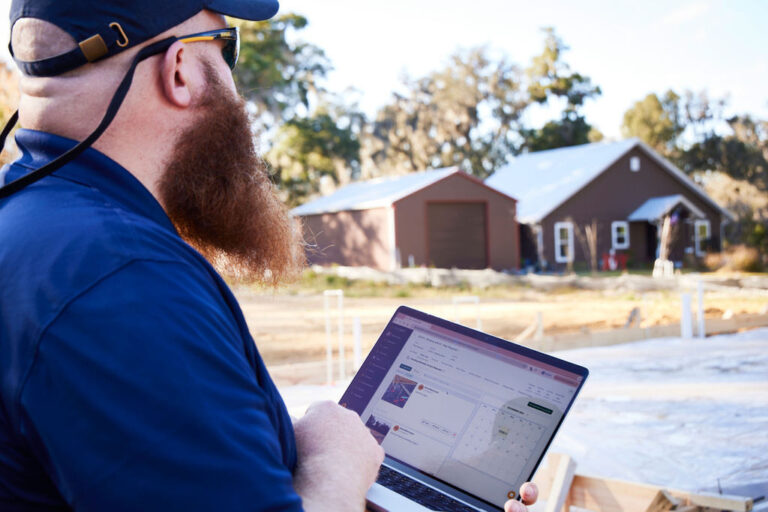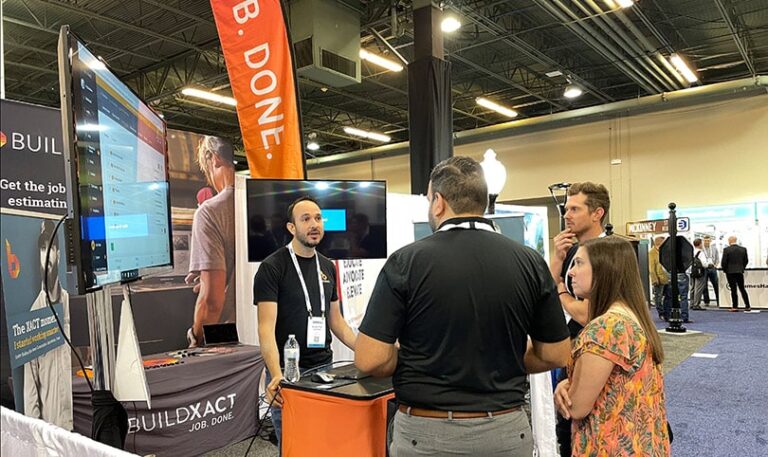The ProSales 100 Conference, held virtually this year due to COVID-19 restrictions, focused on the past challenges and the opportunities for a healthy future for suppliers. Titled Pivot to the Promise of Tomorrow, the conference highlighted how the distribution channel could change and evolve to be more responsive and flexible for their customers.
Below are conference highlights, including Buildxact’s three takeaways on how the game has changed from loss to profit, in favor of the supplier, when working with small builders and remodelers. You can watch the entire 12-minute case study session here.
The Playing Field
With economic recovery likely not getting back to normal until the pandemic is under control, we do see some light at the end of the tunnel. According to Ali Wolf, chief economist at Zonda, the shape of the recovery – K shape – shows that those at the top, the building industry, are reaping a bad economy’s benefits. Home sales and the stock market are higher today than they were in 2019 or pre-pandemic.
During Ali’s session “Economic Outlook,” she citied Zonda’s most recent research that new home sales are up 28% year-over-year. Demand for homes is virtually universal, with most builders having sold homes that they have not yet started. It means there will be a lot of demand for building products moving forward, yet there are some real concerns.
The top five concerns for builders between February to March 2021 were:
- Building material costs
- Building material availability
- Affordability
- Gapping out/running out of lots
- Land prices
While the industry continues to expand, technology remains a catalyst for crucial industries, including the built environment and one of the largest and most influential groups today: millennials. Not only are they able to adopt new technology quickly, but they are also ready to buy a home. Millennials saved more money in 2020 – at a tune of 60 percent more – than in 2019. Where do they plan to use the savings? Keeping their savings was the top of the list, followed closely by using it for a down payment for a home.
How to Win the Game
Here are three takeaways and insights from Buildxact customer, Matthew McCrimmon, Sabado Homes owner in Dallas, Texas; Craig Webb, owner of Webb Analytics; and Brad Farnsworth, President of The Farnsworth Group during the Buildxact case study session.
- Availability:
Service and support are essential but on the builders’ terms. They want real-time availability, pricing, and shipping information.”Pricing is certainly still important, but it may not be the driver as we have historically thought,” said Brad. “This issue of availability and being able to have real-time availability, pricing, and shipping information is critical. They do want service and support but on their terms.”“I know if I’m going to be short an item, I can price shop in real-time and have availability play a role and order the whole thing without talking to someone. That’s amazing to me, and I didn’t have to talk to someone or wait on a price. The order is complete, and I’m going to get a confirmation email when the delivery person arrives.”
“We used to say the big boxes don’t have the knowledgeable salespeople, maybe technology is replacing a knowledgeable salesperson, and they know more of a troubleshooter or problem-solver than necessarily a fact-giver,” said Brad.
“Online has played a big role for us because that is the ultimate immediacy for me,” Matthew added.
- Transparency:
Be honest and truthful if you don’t have a product or it has changed. Big box retailers are investing in technologies that offer transparency. Assume that you’re not the only and primary supplier.“The custom builders and remodelers we talk to say, tell me the truth; if you don’t have it tell me, and I can work around it. If the delivery schedule changes, communicate that to me; just don’t hide it,” said Brad.“The pricing, availability, and shipping, I can see it all upfront. If I could order everything online, I probably would,” said Matthew.
- Frictionless Process
Price matters less than efficiency. They want a personal connection when needed but also know that they don’t need a personal connection each and every time.“There’s a desire for frictionless transactions, but still to have personal connects when personal connections are needed,” said Craig.“So often, we believe that every transaction needs a personal connection, and the answer is no. If you’re buying something and you know what you’re buying, and you’re ok with the price, don’t do it. But you also have to have that availability to be personal as well.”
“As much as I like to speak with a supplier, and it’s good to know that they are there if we can make it as streamlined and as frictionless as possible to make a transaction – regardless of size or scale – the better for me. I don’t think that’s just me; it’s the way the world is moving,” Matthew added.
To hear more of our interview with Matthew, visit our YouTube channel for the longer session.
A New Game Plan
The builders’ purchasing behavior is changing, and it’s critical for the supplier community to prevent leaving money on the table. If we’ve learned anything from last year, the pandemic has changed the game.
In the next few months, Buildxact will explore the inefficiencies that we discussed in our presentation to build the case to help suppliers reduce service costs and make their transactions yield higher profits with technology. To learn more about the project please contact:
Stephen Yates
President, North America – Buildxact
+1 805 729-3185
[email protected]
Sources:
Zonda: Economic, Ali Wolf, Chief Economist, at the ProSales100 Conference
Matthew McCrimmon, owner Sabado Homes, Dallas, Texas
Craig Webb, owner of Webb Analytics
Brad Farnsworth, president at The Farnsworth Group

















